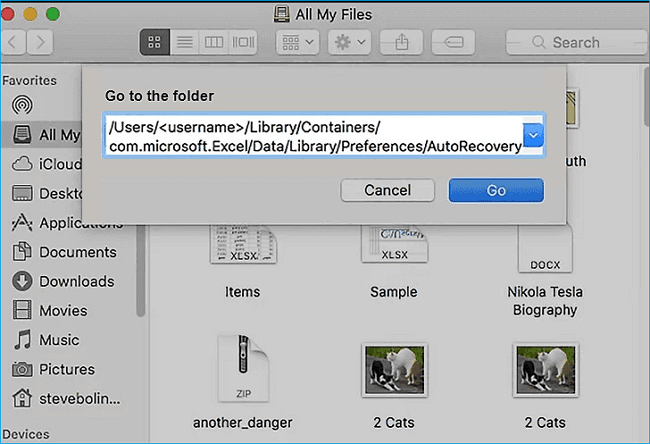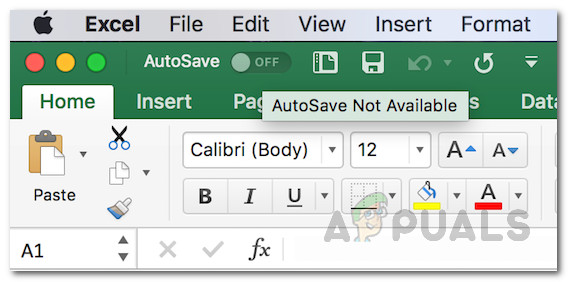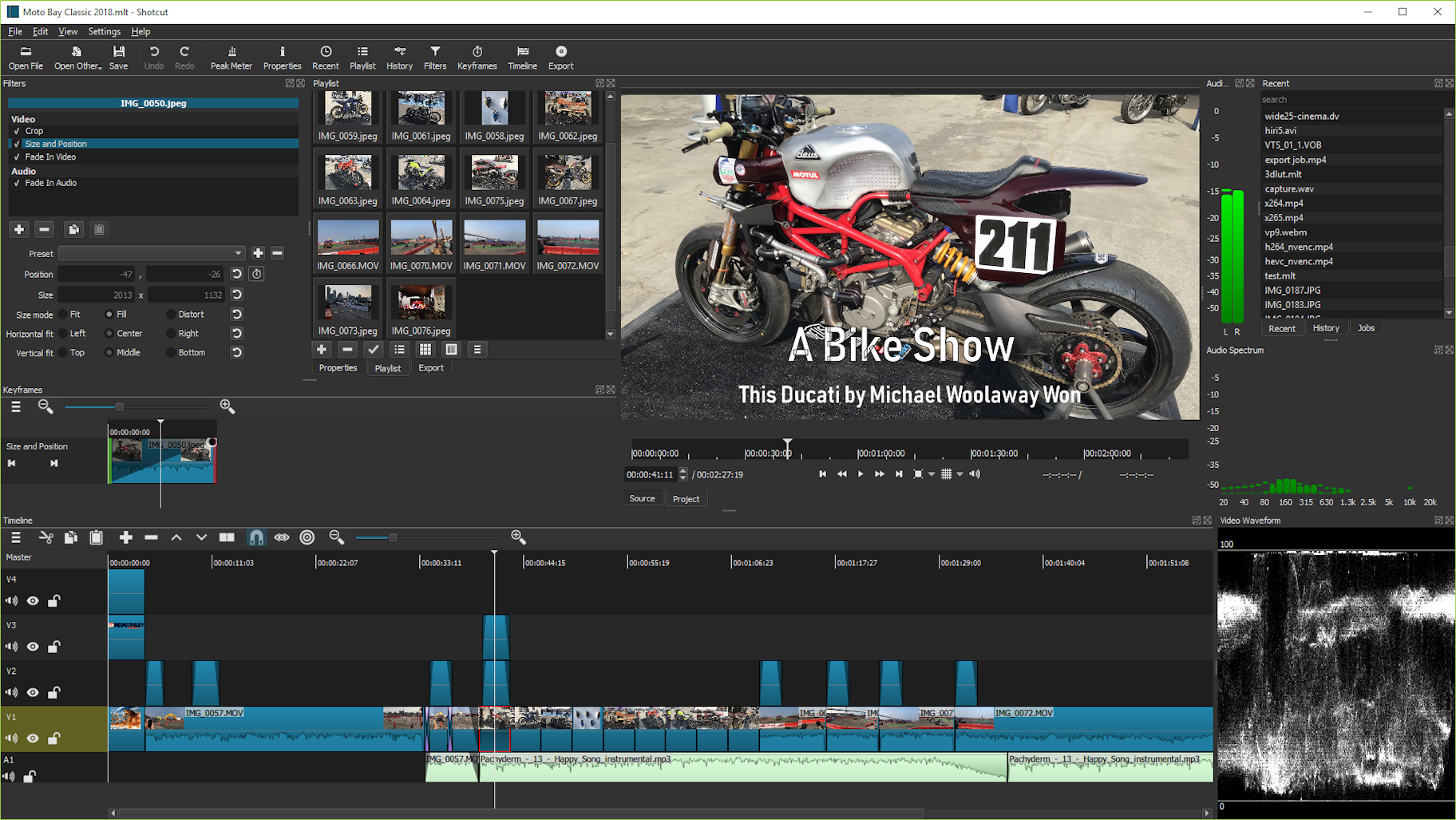Microsoft Excel now has a built-in Auto-Recover feature that has replaced the Auto-Save add-in that exists in versions of Excel that are earlier than Microsoft Excel 2002. The Auto-Recover feature saves copies of all open Excel files at a user-definable fixed interval. From within Excel, you will also be able to view the previous/unsaved versions of your Excel files. Launch Microsoft Excel and open the most recent save you have of the Excel file. At the top of the window, click on 'File' and click 'Info'. Next to 'Manage Workbook' the recent autosaves/autorecovery files are shown.
- Where Is My Microsoft Excel Autosave Folder On Mac Os
- Where Is My Microsoft Excel Autosave Folder On Mac Shortcut
- Where Is My Microsoft Excel Autosave Folder On Mac
Features of Microsoft Office for Mac. New AutoSave Features. Starting with Word, Office 365 you will get the new benefit from a new AutoSave feature when working with OneDrive and SharePoint files. These files automatically save your work. This function is similar to auto-save products such as Google Docs and can be deactivated in the program. Retrieving an AutoRecover file in Excel for Mac 2011. If your computer or Excel crashes, you can recover your work up to the most recent AutoRecover save, but only if you turned on AutoRecover saves. Take these steps to restore any workbooks that were open at the time of the crash: Click the Excel Dock icon. Excel presents any documents that.
Note
Office 365 ProPlus is being renamed to Microsoft 365 Apps for enterprise. For more information about this change, read this blog post.
Summary
Microsoft Excel now has a built-in Auto-Recover feature that has replaced the Auto-Save add-in that exists in versions of Excel that are earlier than Microsoft Excel 2002. The Auto-Recover feature saves copies of all open Excel files at a user-definable fixed interval. The files can be recovered if Excel closes unexpectedly, for example, during a power failure.
This article contains an overview of the Auto-Recover feature.
More Information
How to configure the Auto-Recover settings
Microsoft Office Excel 2007 and Excel 2010
The controls to configure the Auto-Recover feature are in the Save settings in Excel Options.
Note To open the Save settings, click the Microsoft Office Button in Excel 2007 or the File menu in Excel 2010, clickExcel Options in 2007 or Options in Excel 2010, and then click Save.
To configure the Auto-Recover settings, follow these steps:
Under Save Workbooks, click to select the **Save Auto-Recover info every check box to turn on the Auto-Recover feature.
In the minutes box, you can type any integer from 1 through 120. This box sets the number of minutes that will occur between saves.
The default is 10 minutes.
In the Auto-Recover file location box, you can type the path and the folder name of the location in which you want the Auto-Recover files to stay.
The default location is as follows:
drive:Documents and Settings*user_name*Application DataMicrosoftExcel
Notes
If the location that you type is local (on your hard drive) or is on a network drive, and if this location does not exist, you receive the following error message:
Cannot access directory path.
To determine the unique number that is associated with the message that you receive, press CTRL+SHIFT+I. The following number appears in the lower-right corner of this message:
100100
If you click to clear the Auto-Recover file location box but do not enter a new location, Auto-Recover files will continue to be saved to the location that you cleared. This will occur until you type a new location.
The Auto-Recover file location box remains empty until you type a new location.
You can turn off the Auto-Recover feature in an individual workbook. To do this, click to select the Disable Auto-Recover for this workbook only check box under the Auto-Recover exceptions for box. Make sure that the workbook name is selected in the Auto-Recover exceptions for box.
Microsoft Office Excel 2003 and earlier versions of Excel
The controls to configure the Auto-Recover dialog box are on the Save tab of the Options dialog box.
Note To open the Options dialog box, click Options on the Tools menu.
To configure the Auto-Recover dialog box, follow these steps:

Under Settings, click to select the **Save Auto-Recover info every check box to turn on the Auto-Recover feature.
In the minutes box, you can type any integer from 1 through 120. This box sets the number of minutes that will occur between saves.
The default is 10 minutes.
In the Auto-Recover file location box, you can type the path and the folder name of the location in which you want the Auto-Recover files to stay.
The default location is as follows:
drive:Documents and Settings*user_name*Application DataMicrosoftExcel
Notes
If the location that you type is local (on your hard drive) and if the location does not exist, you receive the following error message:
Cannot access directory path.
If the location that you type is on a network drive, you will not receive an alert until your first Auto-Recover attempt. You receive the following error message:
Microsoft cannot save Auto-Recover info to path. Please check the network connection or change the location on the Save tab of the Tools, Options dialog.
If you clear the Auto-Recover file location box but do not enter a new location, Auto-Recover files will continue to be saved to the location that you cleared. This occurs until you type a new location.
Anbe vaa vivek movie online. Anbe Vaa is a 1966 Indian Tamil-language romantic comedy film written and directed by A. The film features M. Ramachandran and B. Saroja Devi in the lead roles, while S.
The Auto-Recover file location box remains empty until you type a new location.
You can turn off the Auto-Recover feature in an individual workbook. To do this, click to select the Disable Auto-Recover check box under Workbook options.
When an Auto-Recover event is triggered
When an Excel file is open and Auto-Recover is turned on, Auto-Recover does not save the file until the first change is made to the file, the Auto-Recover save time interval passes, and Excel has been idle for some time (the default is 30 seconds). After Auto-Recover saves the file, the file is only saved at subsequent save intervals if further changes are made.
When Auto-Recover files are deleted
To keep from filling up your Auto-Recover location with unneeded files, Auto-Recover files are automatically deleted in the following situations:
- When the file is manually saved.
- The file is saved with a new file name using Save As.
- You close the file.
- You quit Excel, whether you choose to save the file or not.
- You turn off Auto-Recover for the current workbook.
- You turn off Auto-Recover by clearing the Save Auto-Recover info every check box.
Auto-Recover save timing
The Auto-Recover timer checks for changed Excel files at the interval you set in the minutes box on the Save tab in the Options dialog box. The timer starts when you start Excel.
Note
In Excel 2007, the minutes box is in the Save category in the Excel Option dialog box. In Excel 2010, the minutes box is in the Save category under File, Options.
When the first save interval passes, Excel checks to see whether any open files have been changed. If Excel locates changed files, an idle timer starts. The purpose of the idle timer is to make sure that the user does not make entries in the worksheet while the save operation occurs. The idle timer restarts each time that the user makes an entry into the worksheet so the Auto-Recover save file is not created until both the save interval passes and no entries are made for the duration of the idle time.
The default idle time is 30 seconds. To change the default idle time, use the AutoRecoverDelay registry key. To do this, follow these steps.
Important This section, method, or task contains steps that tell you how to modify the registry. However, serious problems might occur if you modify the registry incorrectly. Therefore, make sure that you follow these steps carefully. For added protection, back up the registry before you modify it. Then, you can restore the registry if a problem occurs. For more information about how to back up and restore the registry, click the following article number to view the article in the Microsoft Knowledge Base:
322756 How to back up and restore the registry in Windows
Quit Excel if it is running.
Click Start, click Run, type regedit in the Open box, and then click OK.
Locate and then select one of the following registry keys, as appropriate for the version of Excel that you are running.
For Microsoft Excel 2002:
HKEY_CURRENT_USERSoftwareMicrosoftOffice10.0ExcelOptions
For Excel 2003:
HKEY_CURRENT_USERSoftwareMicrosoftOffice11.0ExcelOptions
For Excel 2007:
HKEY_CURRENT_USERSoftwareMicrosoftOffice12.0ExcelOptions
For Excel 2010:
HKEY_CURRENT_USERSoftwareMicrosoftOffice14.0ExcelOptions
On the Edit menu, click New, and then click DWORD value.
Type the following name for the new value:
AutoRecoverDelay
Press ENTER.
Right-click the AutoRecoverDelay registry key, and then click Modify.
In the Value data box, type a number between 1 and 600. This is the number of seconds before Auto-Recover tries to save.
When you are finished, click OK.
Quit Registry Editor.
Note

Only manually performed actions in the program affect the idle timer. Formulas that automatically update the file do not affect the idle timer. Excel saves the file when the idle time is reached, between the automatic updates to the formulas.

File formats that are saved by Auto-Recover
Auto-Recover saves all file formats that can be opened in Excel. To maintain speed and simplicity, Auto-Recover saves all files as the current Excel file format, regardless of the original file format opened. The file is saved as a hidden file with an arbitrary filename with the extension '.xar' (for example, ~ar18a.xar).
When you try to save a recovered file upon reopening Excel after it closed unexpectedly, the original file format and name is suggested as the Save file type. Excel stores the original file name and it's related '.xar' file name in the registry for the purpose of recovery.
Auto-Recover and multiple instances of Excel
When more than one instance of Excel is running and one instance closes unexpectedly, a new instance of Excel is automatically started and the Auto-Recover files are opened. If all instances of Excel close unexpectedly, but the computer is still running, a single instance of Excel is started and all Auto-Recover files are opened. In the case of a power outage, all recovered files are opened when you start Excel again.
Compatibility
All Auto-Recover settings, except the Disable Auto-Recover workbook option, are stored in the system registry. Auto-Recover settings are compatible with files from previous versions of Excel is not an issue.
When the Disable Auto-Recover workbook option is set, and the file is opened in an earlier version of Excel, saved, and then reopened in a later version of Excel, the Disable Auto-Recover workbook option is not affected.
References
For more information about how to troubleshoot errors when you save Excel files, click the following article number to view the article in the Microsoft Knowledge Base:
271513 How to troubleshoot errors when you save Excel files

You are working for few hours on entering data, creating graphs & important reports and, suddenly, you find that the computer crashes due to power failure or other reason -this is really frustrating. In this case, you must read this article to save yourself from doing re-work & thus save your time.
In excel, there are Auto Save & Auto Recover options that help users to save the file after every x minutes & user can change the default path of the file.
Where Is My Microsoft Excel Autosave Folder On Mac Os
Excel AutoSave and AutoRecover
AutoSave and AutoRecover are excellent features in excel & help user to avoid any problem if excel workbook is not saved or restore previous versions. Many people think these are one & same features but they are different from each other.
Excel AutoSave automatically saves a new excel file that you have created, it will not save if the file is not saved at least once. It helps you save your important information in case of any accidental crash or power failure.
Excel AutoRecover helps you in retrieving files which are not saved due to accidental crash or power failure. It helps you in restoring the last saved version; this feature displays in the Document Recovery pane when you start your excel after the crash.
Where Is My Microsoft Excel Autosave Folder On Mac Shortcut
While working on excel file, it is important to know the location of auto-save. Apart from auto save, excel allows you to auto recover the excel file in case of any accidental damage to the workbook. Excel saves a copy of your currently opened file after every x minutes.
Where Is My Microsoft Excel Autosave Folder On Mac
The following steps help you in saving excel file over a particular path:
- Click on File menu
- Click on Options
- From Excel Options select Save

- To change the default location, click on “Default local file location” box & enter the new path where you want to save the excel file.
- To set the default saving time other than 10 minutes, you can click on Save AutoRecover information every x minutes box & enter the minutes from 1 to 120
To be on a safer side in case of any crash or power issue, we suggest you to use 1 minute or so. The logic behind saving excel every minute is the more versions we have there are more chances to have the data secured.
After auto-save as well as auto recover is completed, we can restore a file when any crash happens; thus, we can prevent data from getting corrupt.

